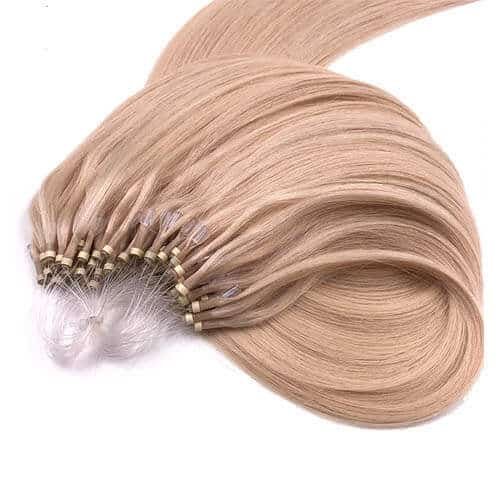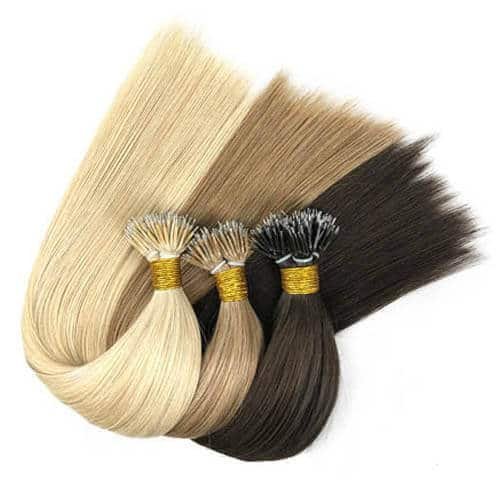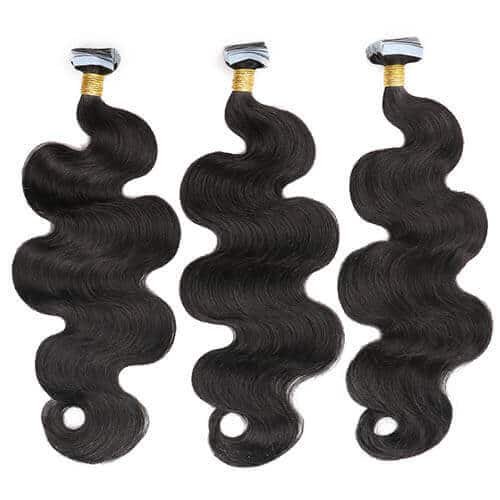Last Updated on 09/06/2025 by Eva Liu
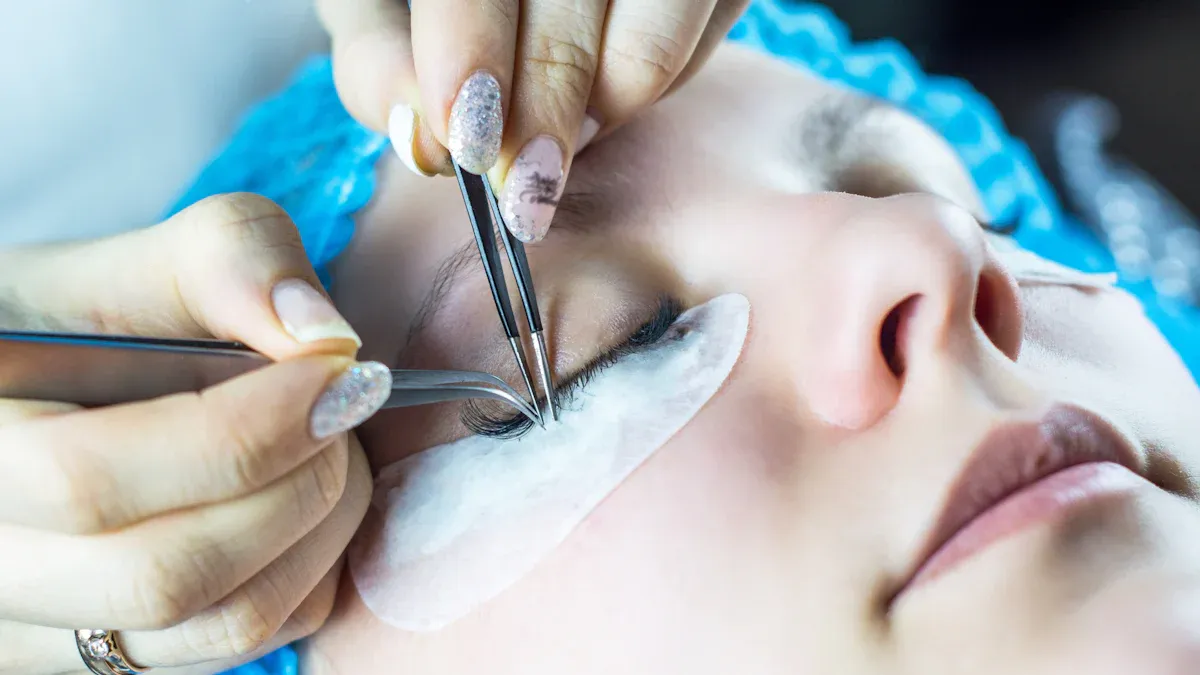
You might hear people say extensions are bad for fine hair. That is not true. You just need gentle extension methods for delicate hair. Many people worry about shedding, tangling, or damage. Some worry about a bulky look. You want human hair extensions that blend in well. They should match your color and feel comfortable. The best extension methods for thin hair keep your hair safe and natural.
Common worries with extensions for delicate hair:
Shedding or tangling
Problems matching color
Damage to your real hair
Allergies or skin irritation
Extensions feeling too bulky
Cost and care needed
Best Extension Methods for Fine Hair
When you have fine or thin hair, you want the best extension methods that protect your natural strands. Not every method works for delicate hair. Some can cause breakage or look bulky. The right hair extension techniques will give you volume and length without stress or damage. Let’s look at the most effective hair extension techniques for fine hair.
Tape-In Extensions
Tape-in extensions are one of the best extension methods for fine hair. You get lightweight wefts that stick flat against your scalp. This design spreads the weight over a wide area, so your thin hair does not feel pulled or stressed. The tapes are almost invisible, even if your hair is very fine. You can style your hair as you like, and the extensions blend in perfectly. Many people with thin hair love this method because it feels comfortable and looks natural. You do not need to worry about bulky clips or heavy beads. Tape-ins are gentle and easy to maintain, making them a top choice for fine hair.
Nano Ring Extensions
Nano ring extensions are another favorite for thin and fine hair. These tiny rings are almost invisible and blend well with your natural hair. You do not need heat or glue, so there is less risk of damage or allergic reactions. The rings hold small sections of hair, which means each strand carries very little weight. This design keeps tension low and helps prevent breakage. Nano rings sit close to your scalp, so they stay hidden even if your hair is very fine. If you want a secure and gentle option, nano rings are one of the best extension methods for fine hair.
Why choose nano ring extensions for fine hair?
Smaller rings blend with fine hair for a natural look.
No heat or glue means less risk of damage.
Secure fit close to the scalp reduces tension on thin hair.
Hand-Tied Wefts
Hand-tied wefts are a gentle and effective hair extension technique for thin hair. These wefts are lightweight and do not add extra strain to your delicate strands. The thin design lets the extensions lie flat against your scalp, so you get a seamless, natural look. Hand-tied wefts use a special method that avoids bulky knots or heavy tracks. This keeps your fine hair safe from breakage and tension. Many people with thin hair choose hand-tied wefts because they are comfortable and easy to blend.
Benefit | Description |
|---|---|
Lightweight and Less Stress on Fine Hair | Hand-tied extensions are made from small, discreet wefts that are lightweight, reducing the risk of breakage. |
Seamless Integration for a Natural Look | The thin and flexible wefts lie flat against the scalp, providing a natural appearance without noticeable lines. |
No Damage or Tension on Natural Hair | The application technique minimizes tension, reducing the risk of hair thinning or breakage over time. |
Halo Extensions
Halo extensions are a great choice if you want to avoid any stress on your fine hair. This method uses a clear, invisible wire that sits on your crown like a headband. The weight of the extensions spreads out evenly across your head. Your natural hair covers the wire, so no one can see it. You do not need clips, glue, or heat. This makes halo extensions one of the best extension methods for thin hair. You can put them on and take them off whenever you want. Halo extensions give you instant volume and length without any risk to your delicate hair.
Halo extensions work well because they do not attach to your natural hair. The even weight distribution keeps your fine hair safe from pulling or breakage. You get a fuller look with zero damage.
Tip: If you want a non-invasive way to boost your hair, try halo extensions. They are easy, safe, and perfect for fine hair.
When you pick the best extension methods for fine hair, you protect your natural strands and get the look you want. Tape-in extensions, nano ring extensions, hand-tied wefts, and halo extensions are all gentle, effective hair extension techniques. These methods focus on even weight, invisibility, and minimal tension. You can enjoy beautiful, full hair without worry.
Why Some Methods Fail Fine Hair
When you have fine hair, not every extension method works in your favor. Some classic extensions can actually make thin or fine hair look worse or even cause damage. Let’s look at why certain methods fail for fine or thinning hair.
Clip-In Extensions
Clip-in extensions seem easy, but they often cause problems for fine hair. You might struggle to blend the extensions with your thin hair. The clips need enough hair to hold on to, but fine hair does not give much support. You may find the extensions slipping out or not staying secure. Many people with fine or thinning hair notice that the clips show through, making the extensions visible. You might try backcombing or using sprays, but these tricks can stress your fine hair even more.
Tip: If you have fine or thinning hair, clip-ins can lead to breakage and even bald spots if you use them too often.
Traditional Sew-Ins
Traditional sew-in extensions use braids as a base. This method puts a lot of tension on your fine hair. If the braids are too tight, you risk thinning edges and even traction alopecia. Fine or thin hair cannot handle this kind of stress. The weight of the extensions pulls on your natural hair, which can lead to breakage and thinning. You might notice sore spots or see your hairline getting thinner over time.
Sew-ins often cause more damage to fine hair than other methods.
The tension from the braids can make thinning worse.
Thick Tape Extensions
Thick tape extensions are not a good match for fine or thin hair. The tapes are bulky and heavy. Your fine hair cannot hide them well, so they often show through. The weight of thick extensions pulls on your delicate strands, causing breakage and thinning. If the tapes are not placed with enough natural hair, you risk bald spots and uneven hair. Fine hair needs lightweight, flat extensions, not bulky tapes.
Note: Thick tape extensions can make fine hair look even thinner by causing stress and making the extensions visible.
Choosing the wrong extensions for fine or thinning hair can lead to breakage, tension, and visible damage. Always look for gentle, lightweight options that protect your fine hair.
Choosing Hair Extensions for Thin Hair
Lightweight Hair
When you have fine or thin hair, you want extensions that feel light and gentle. Heavy extensions can pull on your thin hair and cause breakage. You should look for lightweight extensions that protect your fine hair and keep it healthy. Here’s a quick guide to help you choose:
Type of Extension | Characteristics |
|---|---|
Halo | Easy to apply, lightweight, no damage to hair |
Tape-in | Lightweight, can use single-sided for less weight |
Hand-tied | Gentle application, minimizes tension on hair |
Choose extensions that spread out the weight. Avoid heavy options that can stress your fine hair. Lightweight extensions work best for thin hair because they blend in and do not cause damage.
Color and Texture Match
Getting the right color and texture is key for a natural look. If your extensions do not match your fine hair, they will stand out. You want extensions that match both the color and the texture of your thin hair. Extensions come in many textures, so pick one that feels like your own hair. Multi-tonal shades can add depth and help your fine hair look fuller. When you match the color and texture, your hair extensions for thin hair will blend in perfectly.
Professional Consultation
A professional application makes a big difference for fine hair. A stylist can help you pick the best extensions for thin hair. They know how to apply extensions without causing damage to your fine hair. You get advice on lightweight extensions and the safest methods for thin hair. A professional will check your hair and suggest the best options for your fine hair. This step keeps your hair healthy and helps you get the most out of your hair extensions for fine hair.
Application Tips for Best Hair Extensions
Less is More
When you have fine or thin hair, less really is more. You want to use fewer extensions to keep your hair healthy. Adding too many can weigh down your fine strands and cause breakage. Lightweight options, like tape-in or halo extensions, give you volume without stress. If you use fewer pieces, your hair feels lighter and looks more natural. You can enjoy styling with extensions and still protect your thin hair. Your scalp will thank you for choosing the best hair extensions that do not overload your fine hair.
Tip: Always ask your stylist to use the smallest number of extensions needed for your desired look. This keeps your thin hair safe and strong.
Strategic Placement
Placing extensions in the right spots makes a big difference for fine or thin hair. You want your stylist to avoid fragile areas, like your hairline or temples. Instead, focus on the crown and mid-scalp, where your hair is stronger. Strategic placement helps your extensions blend in and stay hidden. You get a fuller look without showing any tracks. Section your hair horizontally, about an inch above your ears, for the first row. This area has more natural hair to cover the extensions.
Create thin, straight sections for attachment.
Place extensions where your hair is thickest.
The secret to hiding extensions in thin hair is smart placement. Your stylist knows how to make your fine hair look its best.
Quality Hair Selection
Choosing high-quality extensions is key for fine and thin hair. Human hair extensions match your texture and style better than synthetic ones. They blend in, feel soft, and last longer. If you pick extensions that match your hair texture, you avoid breakage and get a natural look. Micro bonds work well for fusion extensions, since they do not add extra weight. Always limit the number of strands used during installation. This keeps your thin hair roots strong.
Factor | Importance for Fine Hair |
|---|---|
Weight | |
Weft Thickness | Thinner wefts blend more seamlessly |
Hair Quality | Human hair offers a more natural look and feel |
Attachment Method | Clip-ins provide versatility and allow for hair breaks |
High-quality extensions help you style your hair with confidence. You can enjoy styling with extensions and keep your fine hair looking healthy.
Caring for Hair Extensions for Fine Hair
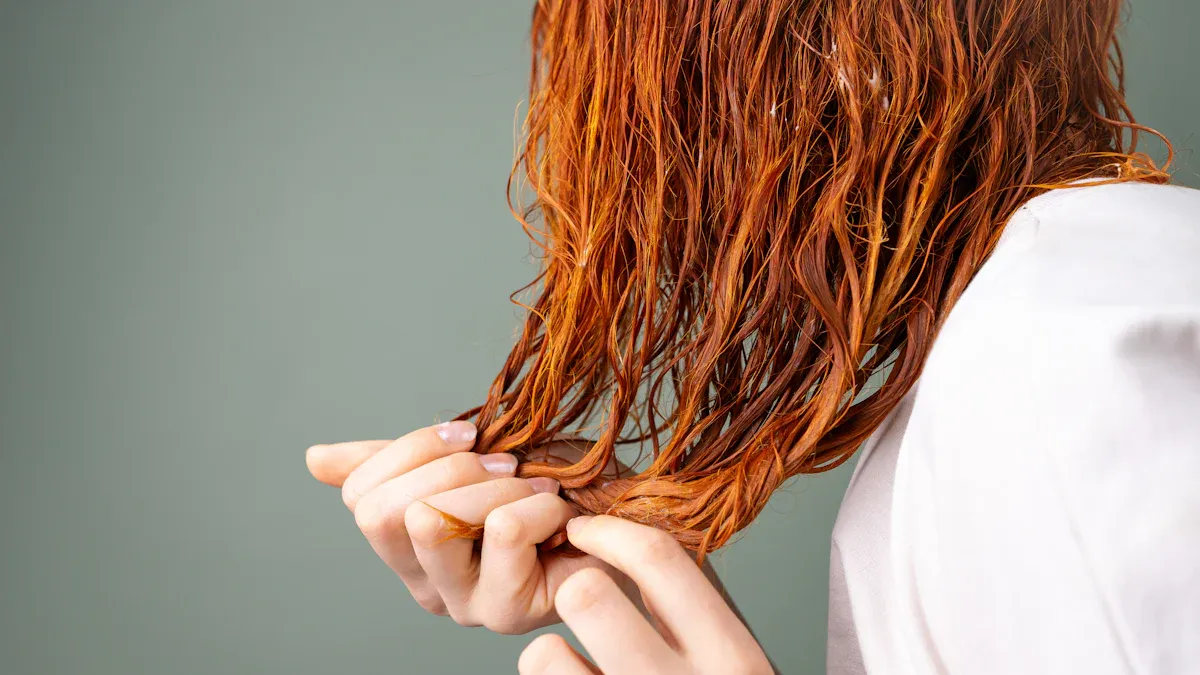
Taking care of your fine hair and extensions helps you keep them looking great. You want to use proper care techniques every day. Fine hair needs gentle hair care and regular maintenance to stay healthy. Let’s look at the best ways to maintain hair extensions for thin hair.
Gentle Brushing
Brushing your fine hair and extensions the right way keeps them smooth and prevents tangling. Use a soft-bristled extension brush or a wide tooth comb. Start brushing from the ends and work up to the roots. Hold your hair at the roots to avoid pulling on the attachment points. Brush at least twice a day. This gentle hair care routine helps you avoid damage and keeps your thin hair strong.
Tip: Try a wet brush in the shower for gentle washing practices. It helps detangle fine hair and extensions without stress.
Scalp Health
A healthy scalp is important for fine hair and extensions. Wash your hair 2-3 times a week with sulfate-free shampoo. This gentle washing practice keeps your scalp clean and prevents irritation. Use a lightweight conditioner from mid-shaft to ends. Avoid putting conditioner on the roots. If you notice dandruff or itching, talk to your stylist. Scalp health helps your extensions stay secure and comfortable on thin hair.
Scalp Care Tips | Why It Matters for Fine Hair and Extensions |
|---|---|
Use gentle products | Prevents irritation and keeps hair healthy |
Address scalp issues | Ensures proper attachment and comfort |
Keep scalp clean | Supports long-lasting extensions |
Regular Maintenance
Scheduling regular maintenance is key for fine hair and extensions. Book appointments every 4-6 weeks. Your stylist will adjust and tighten your extensions, trim split ends, and check for any problems. Regular maintenance helps you keep a seamless blend between your thin hair and extensions. This routine protects your fine hair and keeps your extensions looking fresh.
Note: Regular maintenance and gentle hair care help you enjoy beautiful, healthy hair extensions for fine hair.
Mistakes to Avoid
When you have fine hair, you want to keep your hair healthy and your extensions looking great. Some mistakes can make thin hair look worse or even cause damage. Let’s look at the most common mistakes you should avoid.
Heavy Extensions
Heavy extensions can cause big problems for fine hair. You might think more hair means more volume, but heavy pieces can pull on your thin hair and weaken the roots. This can lead to hair loss and breakage. Some methods, like microbead or micro loop extensions, add too much weight and can make your scalp hurt. If you use tape-in extensions that are too thick, they may not blend well with fine hair and can feel uncomfortable. Always choose lightweight extensions that match your fine hair. Your hair will thank you for it.
Heavy extensions can make thin hair look flat and stressed.
Too much weight can cause headaches and scalp pain.
Improper Application
Improper application can damage fine hair and make your extensions look unnatural. If your stylist does not use enough natural hair in each bead or weft, the extensions can pull and snap your fine strands. Poor stitching or spacing can cause wefts to shift, leading to pain and tension. You might notice bald spots or sensitive areas on your scalp. Make sure your stylist knows how to work with fine hair and thin hair. They should use gentle techniques and spread the weight evenly.
Tip: Ask your stylist to check the placement and support for each extension. This helps protect your fine hair from breakage.
Overloading Hair
Using too many extensions can overwhelm fine hair. You do not need a lot of pieces to get a full look. If you add too many wefts, your thin hair can look heavy and unnatural. Overloading your hair can make it hard to blend the extensions and style your hair. It is better to use fewer extensions and place them carefully. This keeps your fine hair safe and gives you a natural, beautiful look.
Mistake | What Happens to Fine Hair |
|---|---|
Too many extensions | Hair feels heavy and looks fake |
Poor blending | Extensions stand out, not blend |
Wrong shade or length | Hair looks uneven and unnatural |
Remember, fine hair needs gentle care. Choose lightweight extensions, make sure your stylist uses proper techniques, and avoid overloading your thin hair. You will get the best results and keep your hair healthy.
You have great options for fine hair. The best extensions, like tape-in, micro-ring, and halo, protect your hair and add volume and body. Check this table for top choices:
Extensions | Why They Work for Fine Hair |
|---|---|
Tape-in | Gentle, blends well, easy to style |
Micro-ring | Lightweight, low tension |
Halo | No clips, safe for delicate hair |
A professional can match extensions to your hair, giving you a natural look and healthy scalp.
Extensions let you control your hair’s length and style, boosting your confidence every day.



